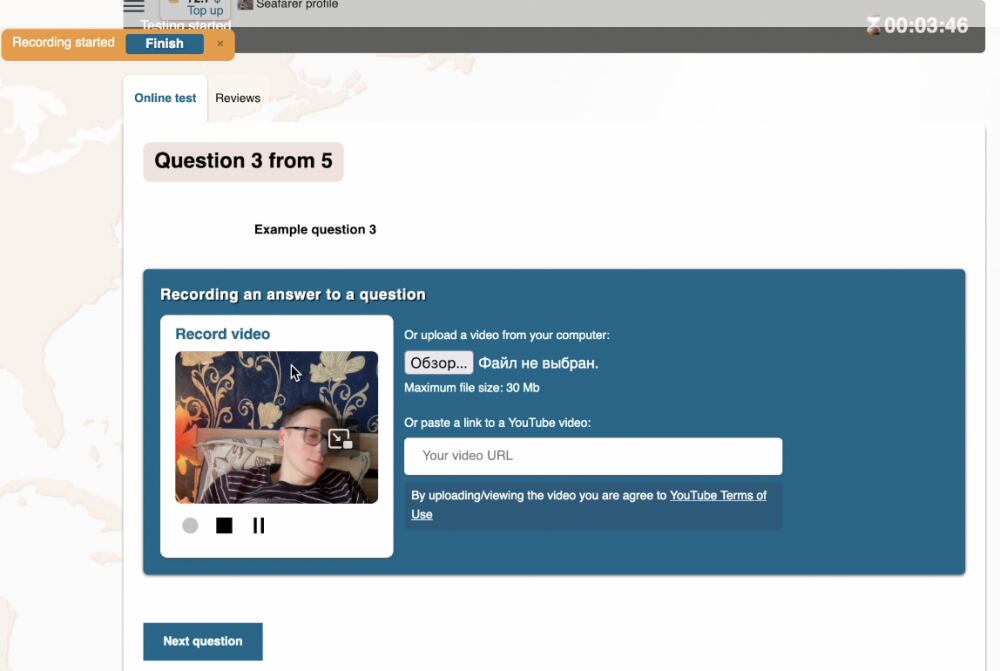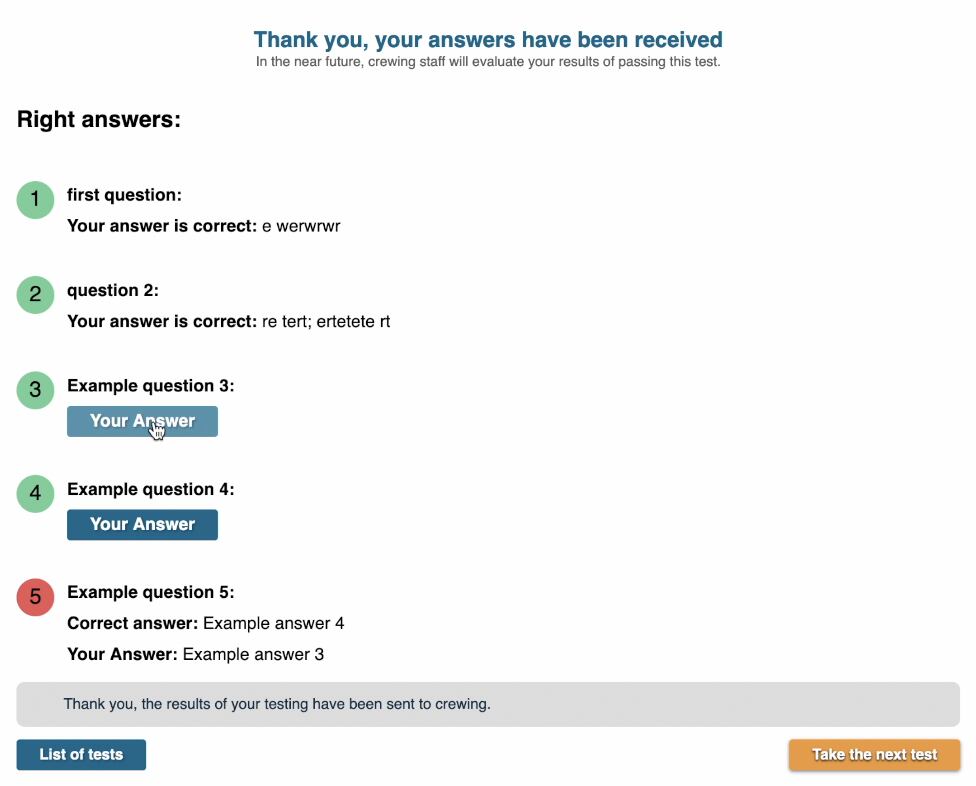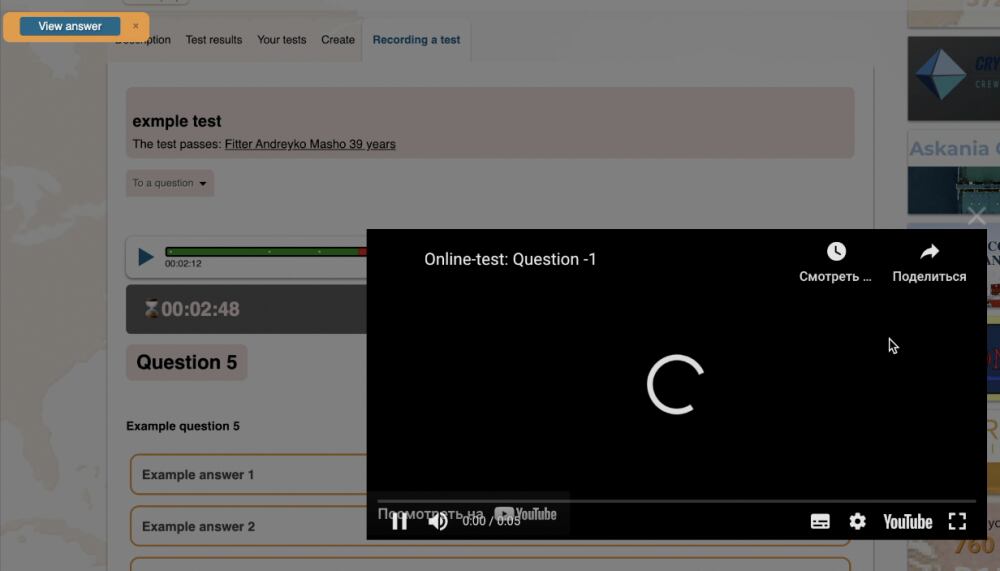How to take CES tests for seafarers for free and online: a complete guide for seafarers


CES tests can be taken for free on the GLOAP website. You don't even need to be logged in to the site.
Choosing a CES test
By going to the test section, you can select a test from the general list of online tests, or filter tests by type of vessel and the position for which they are intended.

After choosing the type of vessel and position, the first in the list you will see a test of 90 random questions for the selected position and vessel. In this case, 90 questions will be randomly selected from thousands of questions of CES tests version 5.

Next are tests on specific topics. These tests contain different numbers of questions, from both CES version 5 and the newer sixth version.
The process of taking the test
As an example, let's look at the test of 90 random questions.

Modes of taking tests
There are three modes of taking tests on the GLOAP site. Two of them are available from the test page. These are the training mode and the test mode.
The only difference between these modes is that in the test mode there is a timer, and each question is given one minute. Otherwise, these modes are equivalent.

Types of questions in the tests
All tests can consist of three types of questions.
The first type of questions are those that suggest only one correct answer from a list of possible answers.

The second type of questions are those for which the correct answer requires selecting 2 or more correct answers. In this case, an answer is considered correct only if you have selected all the answers that are considered correct.

And the third type of questions. They are not found in the publicly available CES tests of the "CES tests online" section, but may be in the test that a crewing company offers you to take. These are questions requiring a verbal answer. In this case, there are no answer options at all, and you need to respond to the given question in video format on your own. For this, after pressing the answer button, the recording from your computer's or phone's camera will start automatically.

After you have answered the question, you need to press the "Finish" button, and after moving to the new question your answer will be saved and passed on to the crewing that created this online test.

In addition to direct recording through the computer's webcam, it is also possible to upload an already recorded answer file to the site. Or you can provide a link to a YouTube video with your answer.
Reviewing test results
So, the last question. And now we see the number of points we have scored. Specifically, the percentage of questions we have answered correctly.

If we were logged in to the site, besides the total number of points earned, we would be able to see a list of all the questions, our answers to them, as well as the correct answers to these questions.
How to find out the correct answers to the CES test
If you took the test without logging in and now want to see which answers you got right and which you did not, simply log in or register on the site. After that, data on the last test you took will be displayed in your private profile.

By clicking on the link in this block, you will see the full list of test questions, the correct answers to them, and the answers you gave.

If you like the result of the test, you can save it in your seafarer's resume.

After saving the results, the name of the passed test and the percentage of correct answers will appear in your seafarer's resume. And also a link to your list of answers, and a link to download the personal certificate.

If this had been a test on a specific topic, rather than consisting of random questions, there would also be a link to the page of this test.
What to do if you have received a request from a crewing company to take an online test
So far, we have considered two modes of taking tests. But there is a third mode. This is when a company asks you to take certain tests. For example, to verify your knowledge and offer you a job.
Consenting to take the test
In this case, if you are online on the site, you will receive a personal notification. And you can immediately agree to take the tests.

You will also receive an email with a request to take the tests, and you can agree by using the buttons in this email.

Online testing
In any case, after giving consent, you will be offered to proceed to a specific test.

In terms of the actual process, the third mode does not differ much from the second mode we have looked at.
However, as mentioned before, in the third mode, among the test questions, there may be questions requiring verbal answers. In this case, immediately after taking the test, you will not be able to find out the score you received for passing the test.
Evaluation of test results
Since verbal answers imply that someone needs to evaluate how you responded, it is not possible to automatically calculate the number of points obtained as a result of taking the test.

First, the company that sent you the link to the test will need to evaluate your answers. And only after that, you will receive an email with the overall result and a link to the list of correct and incorrect answers.

Recording the process of taking the test
So, what are the differences of the third mode of taking tests from the others. Of course, the first difference is that your answers are passed on to the company that asked you to take the test.
But the most important difference to remember is that in the third mode, the entire process of taking the test is recorded.
The company can see exactly how you took the test, how much time you spent on each question, whether you switched to other tabs in the browser or opened other applications instead of the browser. And here is what it looks like in the company's interface.

The entire process of taking the test is on a timeline. Green shows the time when the seafarer was on the test tab. Red shows the time when the seafarer either switched to another browser tab or made any other window active instead of the browser.
A white dot in the middle marks the start of each new question.
The company can start playing the player, and see when and how the seafarer pressed the answer buttons.

If the video button changes color, it means the seafarer has pressed it.
If it is a verbal answer button, as soon as the video with the answer is recorded, a link to its viewing will appear in a popup window.

The company can also view in a list how much time the seafarer spent on each question, and how much of that time the browser tab was inactive.


